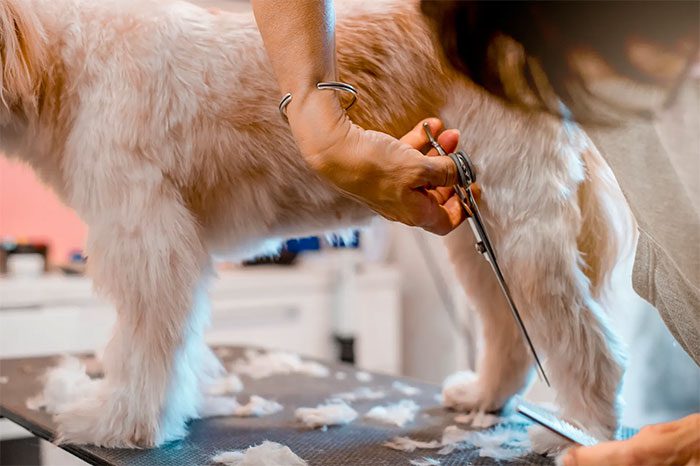There are things you consider trivial or disposable, but in reality, they are valuable materials. For example, dog hair can be woven into some of the most expensive fabrics in the world.
Today, the fashion industry has become one of the major contributors to pollution. The production process of conventional fabrics generates significant amounts of methane, contributing to global warming. Therefore, the search for alternative materials is an urgent necessity, and dog hair fabric is experiencing a revival.
The technique of weaving fabric from dog hair is not new; it has existed for millennia and is known as Chiengora – “the art of turning dog hair into woven fabric.”

Most of us are unaware that dog hair is a true treasure being wasted.
There are many different breeds of dogs, but generally, dog hair fabric is very durable and warm. Depending on the breed, dog hair can be stiffer than camel hair and superior to wool in most aspects. In fact, dog hair can be compared to camel hair, which is used to create one of the finest fabrics in the world, utilized by top luxury fashion brands to weave expensive coats.
Different breeds of dogs have different types of fur, so the quality of the materials used to make the fabrics varies, resulting in different price points.
The hair of dogs with long, soft, and silky fur tends to be very expensive. For instance, fabric made from Samoyed dog hair – a breed known for its soft, white fur – can cost around $420 (nearly 10.4 million VND) per kilogram, which is significantly higher than the price of premium cashmere fabric.
In fact, in 2022, the fiber magazine quoted the “typical price” of Chiengora at up to $636 per kilogram. For comparison, one kilogram of high-quality cashmere fabric ranges from 1-3 million VND.
Dog hair is an ideal material that is always available and is discarded in large quantities every year. This is driving the revival of Chiengora, which has the potential to become one of the developing industries in the near future.


















































